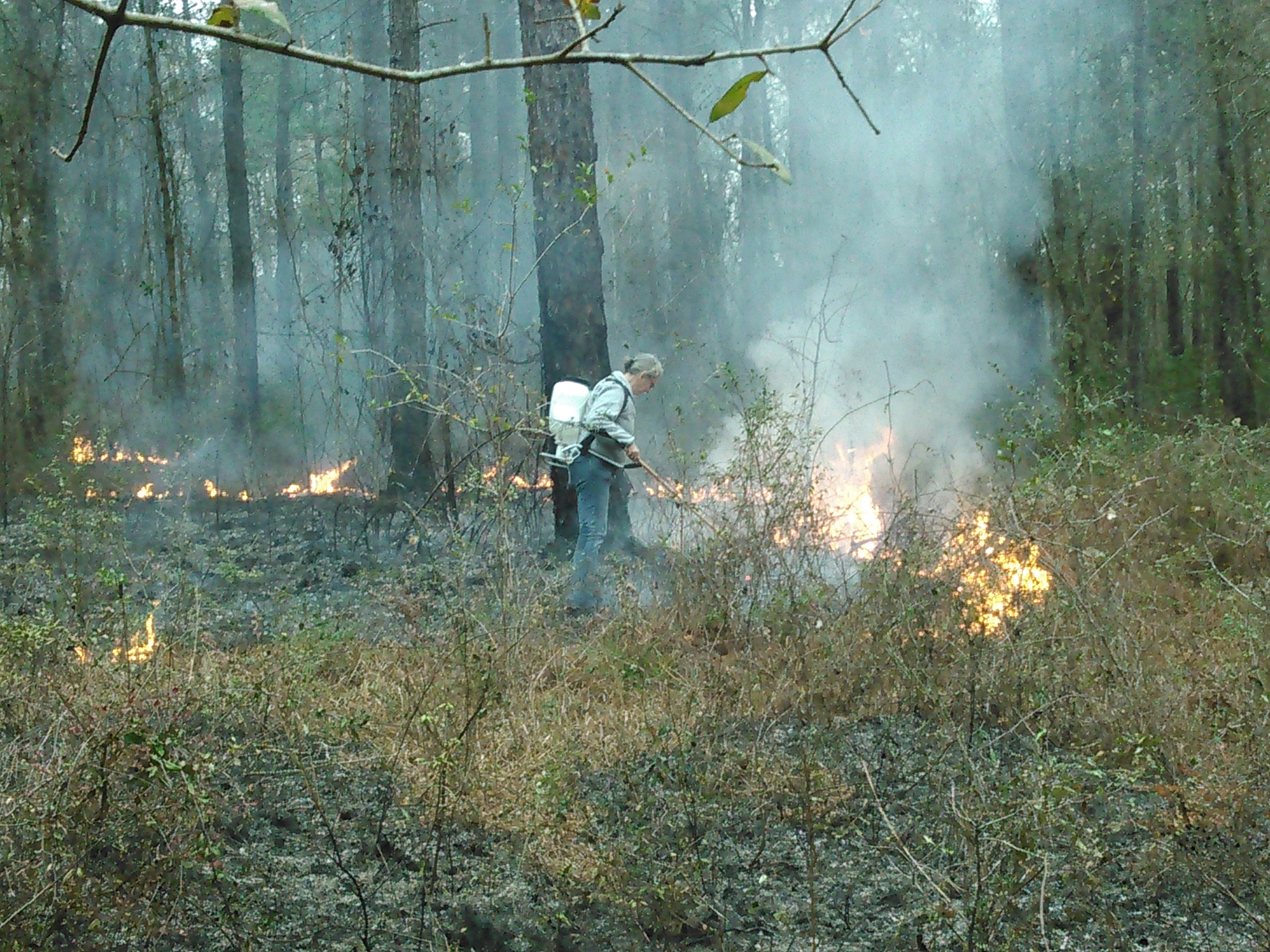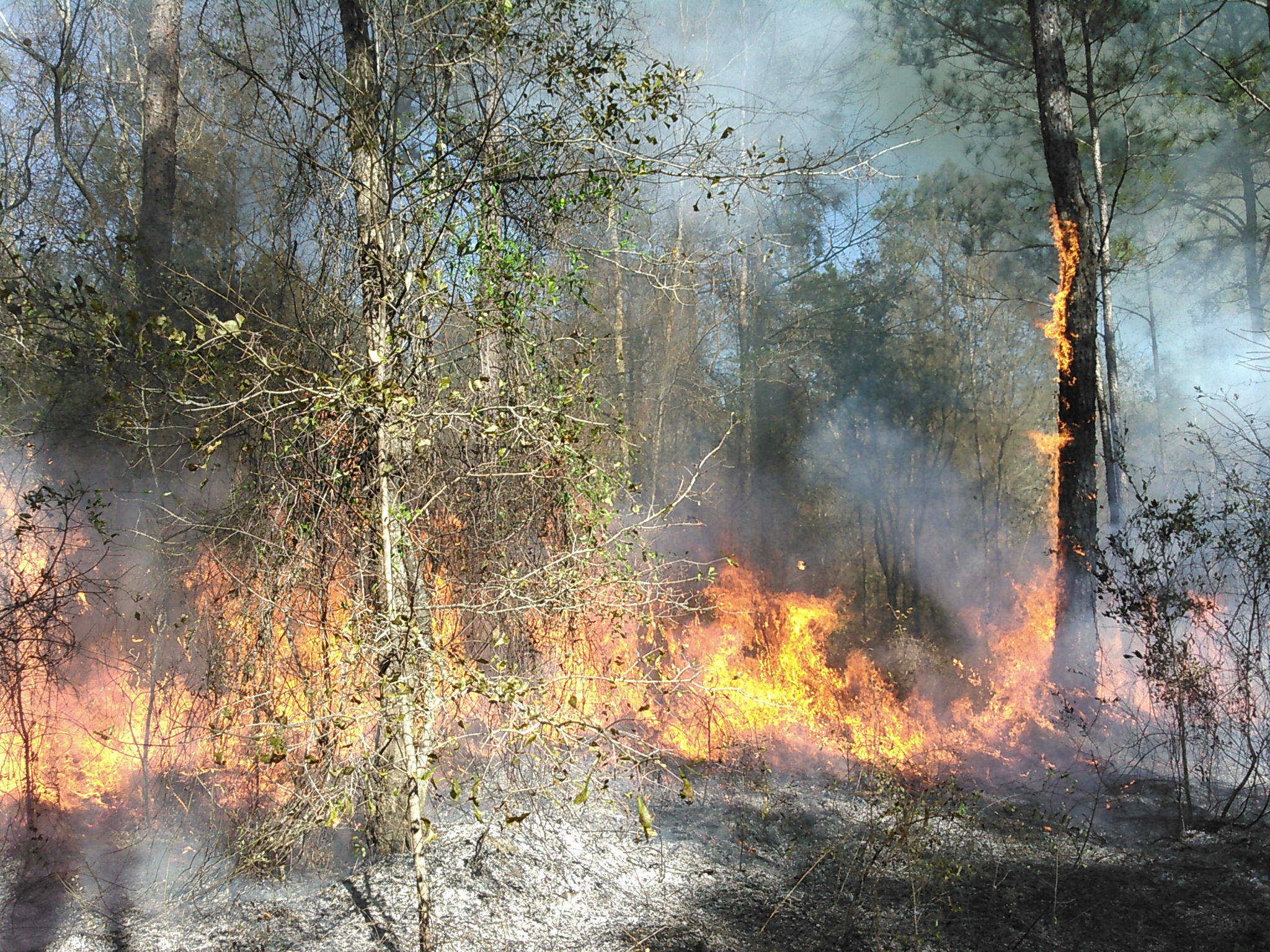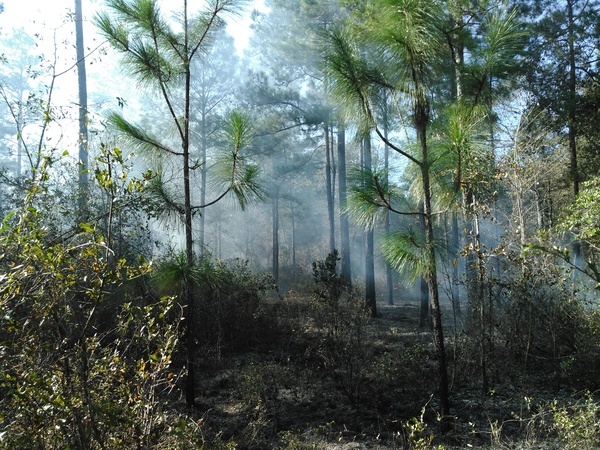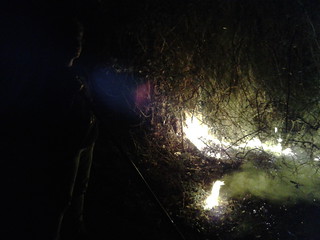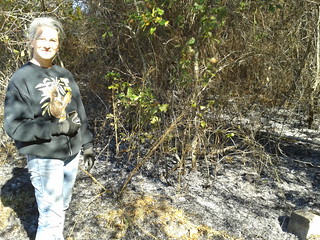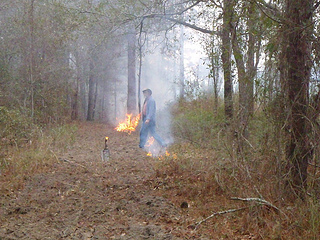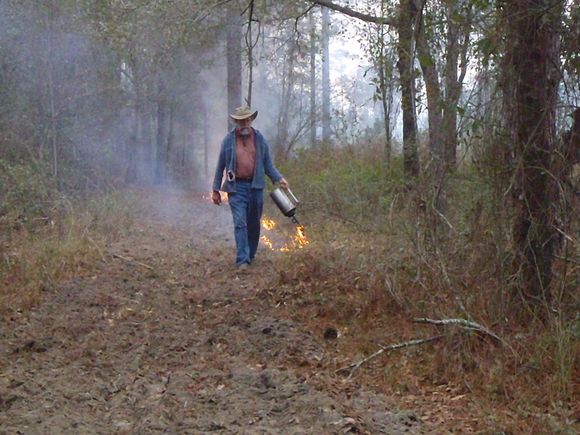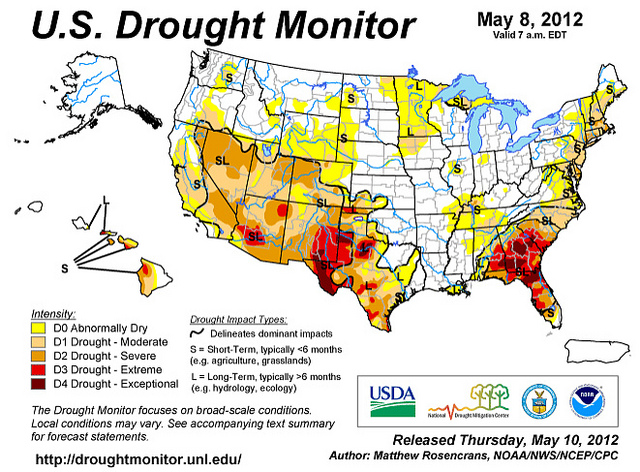Yellow Dog is really not easily impressed.
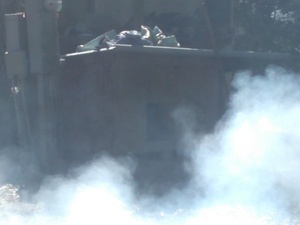 Burning the woods 10 feet in front of her dog house produced a lot of smoke, as you can see.
Did she care?
Burning the woods 10 feet in front of her dog house produced a lot of smoke, as you can see.
Did she care?
Category Archives: Fire
Fire brigade
Why not to wait 20 years between burns
Prescribed burns
Gretchen and I burned some woods the last couple days. Here’s why we burn: longleaf pine unharmed, while small trees of other species (slash and loblolly pine, an especially oaks) are weeded out by the fire.
Click on any picture for a bigger one. -jsq
Day 1: Planted pines
Continue readingTame fire
setting fire to the woods
Protracted extreme drought: U.S. Drought Monitor, 2012-05-08
Acording to U.S. Drought Monitor, drought throughout south Georgia and surrounding areas is either extreme or exceptional, and has been for months.
Here you can see detail for Georgia:
Continue readingGreening and candling burned longleaf
 Back in December
Back in December
 we burned some planted longleaf.
Six weeks later, they’re greening up and candling.
I couldn’t find a single longleaf that didn’t survive.
Even ones that a few weeks ago you would have thought
were burnt sticks now have green leaves or white candles
or both.
we burned some planted longleaf.
Six weeks later, they’re greening up and candling.
I couldn’t find a single longleaf that didn’t survive.
Even ones that a few weeks ago you would have thought
were burnt sticks now have green leaves or white candles
or both.
Here’s a slideshow.
Pictures by John S. Quarterman 29 February 2012.
-jsq
Burning some piney woods 2012 01 31
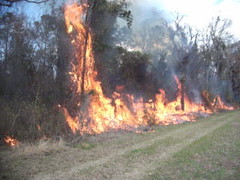

Pictures and videos by John S. Quarterman and Gretchen Quarterman, 31 January 2012.
 Fortunately these vines were mostly in
invasive exotics anyway
(chinaberry, mimosa, Japanese privet) that had grown up along the field edge.
After a few minutes,
here’s the result.
Fortunately these vines were mostly in
invasive exotics anyway
(chinaberry, mimosa, Japanese privet) that had grown up along the field edge.
After a few minutes,
here’s the result.
Most of the rest of the woods burned much more evenly, with flames only a foot or two above the ground.
Burning planted longleaf, 16 December 2011

Burning planted longleaf, Okra Paradise Farms, Lowndes County, Georgia.
Pictures by Gretchen Quarterman, 16 December 2011.
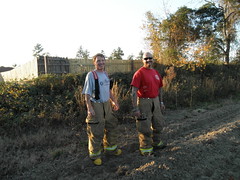 The longleaf themselves are the most fire-resistant of trees.
Almost all of these longleaf will survive the fire and thrive.
The volunteer loblolly and slash, not so much, and any oaks or other trees even less,
so fire favors the longleaf.
We had perfect burning conditions: 5-8 MPH wind from the northwest, blowing towards
the road.
The longleaf themselves are the most fire-resistant of trees.
Almost all of these longleaf will survive the fire and thrive.
The volunteer loblolly and slash, not so much, and any oaks or other trees even less,
so fire favors the longleaf.
We had perfect burning conditions: 5-8 MPH wind from the northwest, blowing towards
the road.
 Some of the subdivision neighbors who are not familiar with prescribed burns
called the county fire department.
They came out, took one look at the firebreak, and filed a report saying all was OK.
Some of the subdivision neighbors who are not familiar with prescribed burns
called the county fire department.
They came out, took one look at the firebreak, and filed a report saying all was OK.
 Here’s how the fire got started. Some pyromaniac dribbling fire….
Here’s how the fire got started. Some pyromaniac dribbling fire….
Here’s a slideshow and a playlist of some videos. Continue reading
